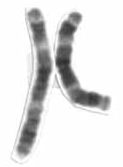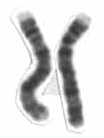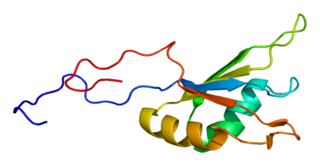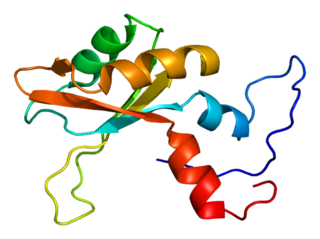RNA-binding proteins are proteins that bind to the double or single stranded RNA in cells and participate in forming ribonucleoprotein complexes. RBPs contain various structural motifs, such as RNA recognition motif (RRM), dsRNA binding domain, zinc finger and others. They are cytoplasmic and nuclear proteins. However, since most mature RNA is exported from the nucleus relatively quickly, most RBPs in the nucleus exist as complexes of protein and pre-mRNA called heterogeneous ribonucleoprotein particles (hnRNPs). RBPs have crucial roles in various cellular processes such as: cellular function, transport and localization. They especially play a major role in post-transcriptional control of RNAs, such as: splicing, polyadenylation, mRNA stabilization, mRNA localization and translation. Eukaryotic cells encode diverse RBPs, approximately 500 genes, with unique RNA-binding activity and protein–protein interaction. During evolution, the diversity of RBPs greatly increased with the increase in the number of introns. Diversity enabled eukaryotic cells to utilize RNA exons in various arrangements, giving rise to a unique RNP (ribonucleoprotein) for each RNA. Although RBPs have a crucial role in post-transcriptional regulation in gene expression, relatively few RBPs have been studied systematically.

Chromosome 3 is one of the 23 pairs of chromosomes in humans. People normally have two copies of this chromosome. Chromosome 3 spans almost 200 million base pairs and represents about 6.5 percent of the total DNA in cells.

Chromosome 4 is one of the 23 pairs of chromosomes in humans. People normally have two copies of this chromosome. Chromosome 4 spans more than 186 million base pairs and represents between 6 and 6.5 percent of the total DNA in cells.

The Argonaute protein family plays a central role in RNA silencing processes, as essential components of the RNA-induced silencing complex (RISC). RISC is responsible for the gene silencing phenomenon known as RNA interference (RNAi). Argonaute proteins bind different classes of small non-coding RNAs, including microRNAs (miRNAs), small interfering RNAs (siRNAs) and Piwi-interacting RNAs (piRNAs). Small RNAs guide Argonaute proteins to their specific targets through sequence complementarity, which then leads to mRNA cleavage or translation inhibition.

Interleukin enhancer-binding factor 3 is a protein that in humans is encoded by the ILF3 gene.

RNA-binding protein 8A is a protein that in humans is encoded by the RBM8A gene.

Interleukin enhancer-binding factor 2 is a protein that in humans is encoded by the ILF2 gene.

RISC-loading complex subunit TARBP2 is a protein that in humans is encoded by the TARBP2 gene.

RNA-binding protein 10 is a protein that in humans is encoded by the RBM10 gene.

RNA-binding motif protein, Y chromosome, family 1 member A1/C is a protein that in humans is encoded by the RBMY1A1 gene.

RNA binding motif protein 9 (RBM9), also known as Rbfox2, is a protein which in humans is encoded by the RBM9 gene.

Putative RNA-binding protein 3 is a protein that in humans is encoded by the RBM3 gene.

Putative RNA-binding protein 15 is a protein that in humans is encoded by the RBM15 gene. It is a RNA-binding protein that acts as a key regulator of N6-Methyladenosine (m6A) methylation of RNAs

Probable RNA-binding protein 23 is a protein that in humans is encoded by the RBM23 gene.

RNA-binding motif, single-stranded-interacting protein 1 is a protein that in humans is encoded by the RBMS1 gene.

RNA-binding protein 7 is a protein that in humans is encoded by the RBM7 gene.

RNA-binding protein 39 is a protein that in humans is encoded by the RBM39 gene.

RNA recognition motif, RNP-1 is a putative RNA-binding domain of about 90 amino acids that are known to bind single-stranded RNAs. It was found in many eukaryotic proteins.

RNA binding motif protein 44 is a protein that in humans is encoded by the RBM44 gene.
Single-pass membrane and coiled-coil domain-containing protein 3 is a protein that is encoded in humans by the SMCO3 gene.

















